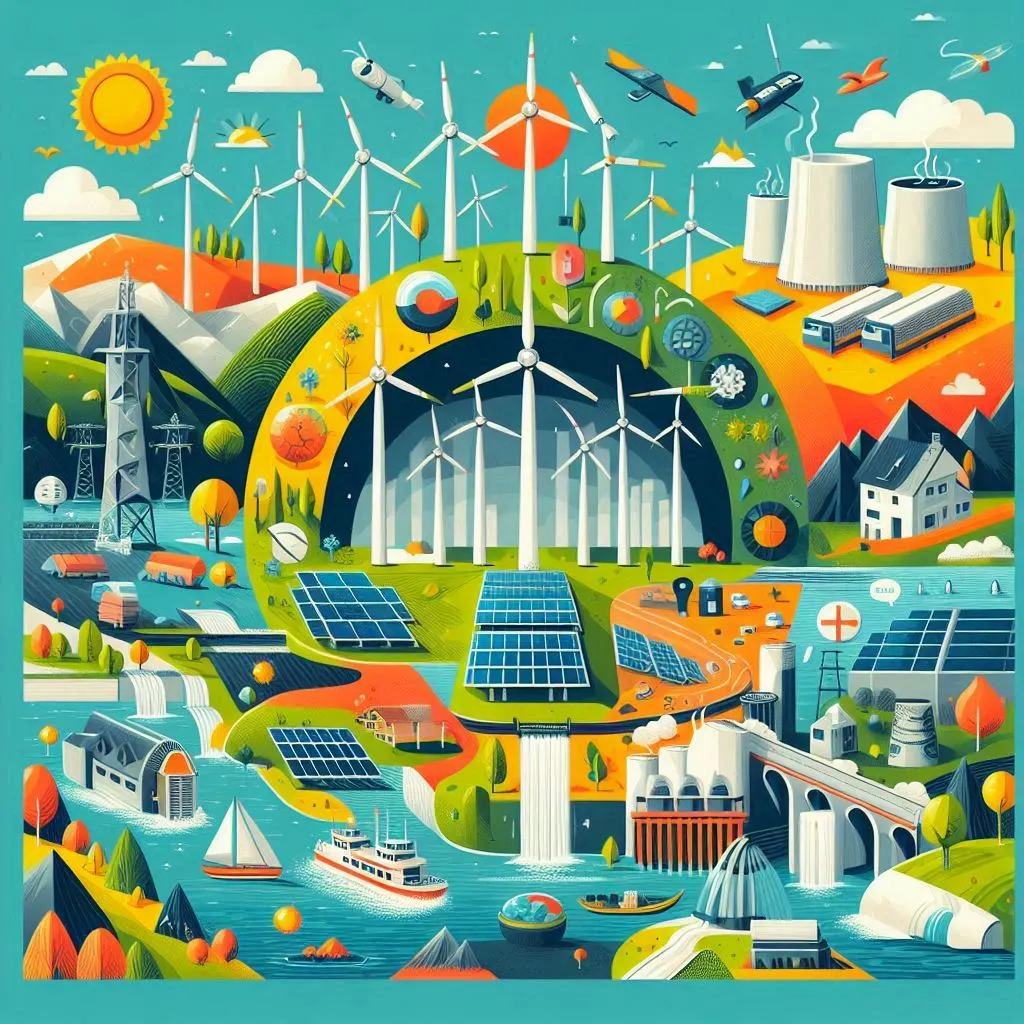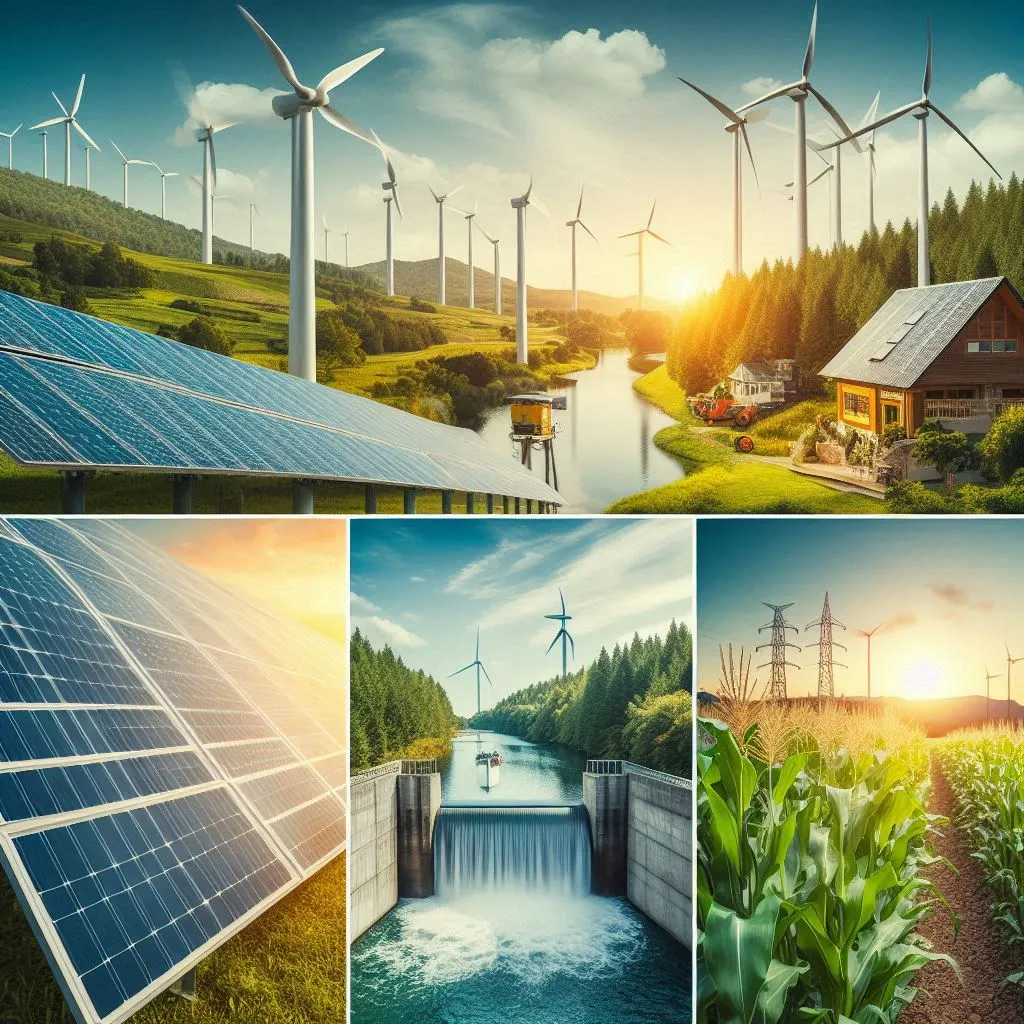Renewable Resources Examples: Using Nature’s Gifts
Imagine a world where the sky is clear, the air is fresh, and our cities are powered by the silent forces of nature. Our choices today will shape this world for tomorrow. It's not just about numbers - it's about hope and responsibility. Renewable resources give us a way to keep progress and protect our planet.

Key Insights
- Renewable resources are those that can be replenished naturally over time.
- Examples include solar energy, wind power, hydropower, geothermal energy, and biomass.
- Using renewable resources is key for sustainability and fighting climate change.
- Switching to renewable energy can create jobs and make sure we have energy in the future.
Solar Energy: Capturing Sunlight
Solar energy comes from the sun. It’s a very common renewable resource. The sun shines on Earth every day, providing us with lots of energy.
" The sun, with all those planets revolving around it and dependent on it, can still ripen a bunch of grapes as if it had nothing else in the universe to do. " - Galileo Galilei
Pros
- Infinite Supply: The sun will keep shining for billions of years!
- Low Maintenance: Solar panels need little care once installed.
Cons
- Weather Dependent: Solar power needs sunny days.
- Expensive Setup: Installing solar panels can cost a lot at first.
Wind Power: Capturing Breezes
Wind power uses the wind’s energy. Wind turbines turn this energy into electricity for our homes and businesses.
" The answer, my friend, is blowin' in the wind. " – Bob Dylan
Pros
- Clean Energy: Produces no pollution while working.
- Flexible: Can be set up in many places.
Cons
- Visual Impact: Some people don't like how turbines look.
- Noise: Wind turbines can be loud.
Hydropower: Energy From Water
Hydropower uses moving water to create electricity. This can be from rivers, dams, or ocean tides.
Pros
- Reliable: Water flow is steady, unlike sun and wind.
- Energy Storage: Hydropower plants can store energy for later use.
Cons
- Environment Impact: Dams can harm local ecosystems and communities.
- Costly Setup: Building hydropower plants costs a lot.

Geothermal Energy: Heat From The Earth
Geothermal energy uses the heat from inside the Earth. This can heat buildings and generate electricity.
Pros
- Constant Source: The Earth always produces heat.
- Low Emissions: Produces little pollution.
Cons
- Location Specific: Only available in certain areas.
- High Drilling Costs: Getting to the heat is expensive.
Biomass: Energy From Organic Materials
Biomass uses organic materials like wood, crops, and waste to make energy.
Pros
- Reuses Waste: Turns waste into energy.
- Carbon Neutral: Plants absorb CO2, balancing what’s released when burned.
Cons
- Air Pollution: Burning biomass can produce harmful gases.
- Land Use: Needs a lot of land to grow biofuel plants.

Summary
Renewable resources offer a way to create a sustainable and eco-friendly future. Each resource-solar, wind, water, geothermal, and biomass—has its benefits and challenges. Embracing these alternatives is crucial for our planet's health and for building a stable, independent energy future.
" The greatest threat to our planet is the belief that someone else will save it. " - Robert Swan
FAQ
Q: What is the main advantage of renewable resources?
A: The main benefit is that they can be used over and over again without running out, providing a long-term energy solution.
Q: Can renewable resources completely replace fossil fuels?
A: While it can be difficult, replacing fossil fuels with renewable resources is possible with new technology and support from policies.
Q: How do renewable resources impact the economy?
A: They can create jobs, lower energy costs over time, and reduce dependence on imported fuels, improving energy security.
" This page contains affiliate links. If you purchase through these links, I may earn a commission at no additional cost to you. As an affiliate for Amazon and other companies, I earn from qualifying purchases. "